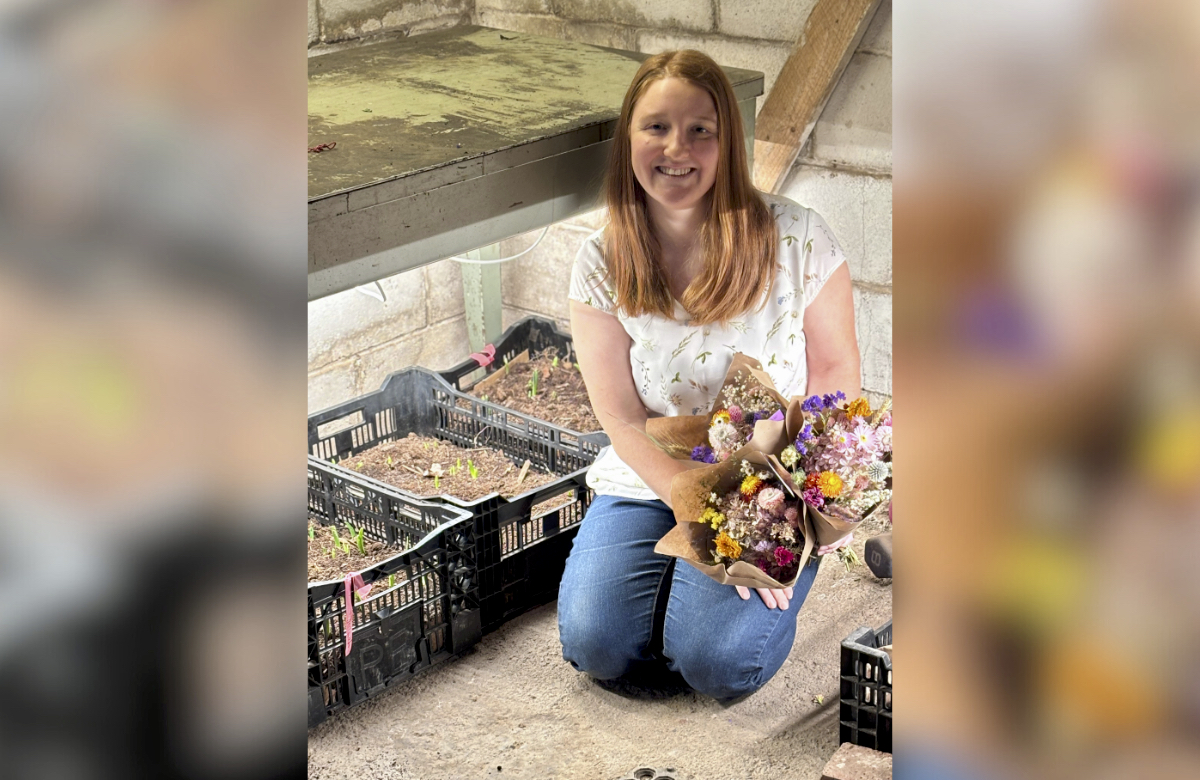January is a relatively quiet month at A Beautiful Wild, a flower farm located in Nova Scotia’s Annapolis Valley. The last of the Christmas wreaths and floral arrangements are out the door, and the Valentine’s Day blooms are not yet ready.
Owner-operator Sarah Callow-Fisher and her husband, Devan, market their products through local farm stands, a flower CSA (consumer supported agriculture), farmgate sales and by creating custom arrangements for weddings and funerals.
But in the 10 short years Callow-Fisher has been in business she’s noticed changes in the climate — changes that have prompted her to explore different ways to work with, rather than against, nature.
Read Also

Producers aren’t panicking over tariffs and trade threats
The influence of tariff and trade uncertainity on farm business decisions.
Heat, cold, wind, water — too much or too little — can have a disastrous effect on her crops. Insect life cycles are also affected by changing weather patterns and too many pests can stress plants.
Not too hot, please
Heat, for example, can cause a bloom to open too quickly which affects how long it lasts in a customer’s bouquet.
“You have to pick things at the right stage of harvest for it to last longer for the consumer,” Callow-Fisher says. “Sometimes I’m out there three times a day picking the same crop to get it picked at the perfect stage.”
Heat is a double-edged sword for an early crop such as tulips.
Callow-Fisher uses low plastic tunnels (temporary structures, approximately 4 feet tall and 3 to 6 feet wide, constructed of wire or pipe hoops and plastic cover) to trap heat and encourage the thousands of tulip bulbs to grow and bloom early, but a mild day can cause the buds to open too quickly. Tunnels also protect the delicate plants from hail and heavy spring rains.
“If tulips are budded and ready to be picked and then we get hit with hail, that will ruin the entire crop. Conversely, we keep the tunnel sides up because if the tulips get too hot, then they’ll sizzle. So, it’s this dance of what’s the best option,” she says.

Water, water everywhere
Water is also a challenge. Too much can cause disease or even the death of a plant, and damp conditions can encourage bugs or disease.
As Callow-Fisher expanded her gardens she’s learned that not all plants do well in the same area of her property.
“A couple years ago we had quite a bit of torrential rain. There were low-lying areas that hadn’t shown themselves before. A few perennial crops were flooded under two inches of water for a week which killed the roots.”
The loss of crops she thought she’d have for many years was a big learning curve. She says that’s part of business, figuring out which crops she can plant in those areas — ones that can handle water and wet feet. Adding tile drainage isn’t a practical investment for her small property.
So, this year she’s planting irises in those low areas as they tolerate wet feet for extended periods.
But too little water, especially when accompanied by heat, can also cause problems.
The last couple of springs in Nova Scotia have been dry with hot temperatures in May. Because Callow-Fisher lives where she farms, she’s keenly aware of water usage and looks for ways to manage water during dry spells.
“We have rain barrels under eaves to collect rainwater,” she says. “That way we’re not using water from our well. We also soak seedlings before we plant them so, when they go in the ground, they’re already wet and we don’t have to water as soon as they hit the dirt.”
Working with nature
Callow-Fisher has also learned that some plants need a chill to thrive.
“Some flowers I’m planting eight weeks before our last frost. So even though it’s still cold outside and they could still get frost, they’ll grow better that way.
“When I first started, I wouldn’t plant anything until the last frost date, but then I didn’t have anything blooming in June.”
For late spring or early fall nights when the temperature takes an unexpected plummet, Callow-Fisher uses row covers to protect plants from the frost.
“Our last frost date has really changed (from) the first week of June to now the middle of May (and) we’re hitting heat waves.”
To get a jump on spring planting, she spends time in the fall tilling and adding manure or compost to spring beds.
Heat stress
Early summer temperatures in the middle of spring are as much of a threat as cold.
Seedlings are vulnerable to random 30-degree days in May. It can fry their delicate stems, even when they’ve been hardened off.
The early spike in heat also affects crops like tulips or peonies.
“Peonies usually bloom mid-June, but if the beginning of June is really warm, they’ll come on and within two or three days the whole crop will be blooming and gone,” she says. “If you’re not on top of that, then a crop that you may think is going to bloom at the middle of the month could be gone the first week, and you didn’t even have a chance to cut it.”
She grows a wide range of annuals and perennials and saves her own seeds to help acclimatize plants to her specific microclimate.
Pest management
The lack of deep winter freezes, extended wet spells, and heat waves combine to increase the effects of insect pressures. Callow-Fisher is adamant about not using chemical controls.
“There are many beneficial bugs, and you have to be willing to have the bad bugs to get the good bugs.”
She over-plants, knowing part of her crop will get eaten.
It’s an ill wind
Wind can cause significant damage to flowers so low tunnels help in some cases.
Later in the season, Callow-Fisher uses a type of netting for taller plants. It’s laid over plants horizontally and they grow through the netting to stay straight and secure.
“In a windstorm or a hurricane, plants will snap and that’s it. You won’t have enough time for them to regrow and to produce more blooms so you can lose your whole crop overnight if you’re not prepared.”
Callow-Fisher just bought an acre of adjacent property so that she can rest her flower beds for a year and more tightly manage crop rotations.
“I’ve noticed different types of diseases are staying in plots, so I want to cover crop and rest those areas for a while.”
She’s doing her best to work with nature and adapt to the changes she’s seeing around her.















